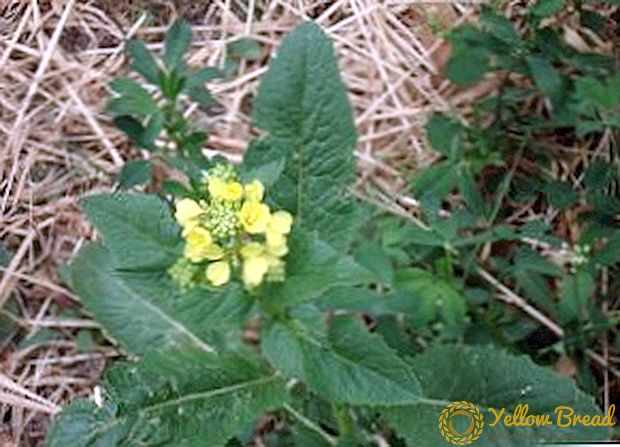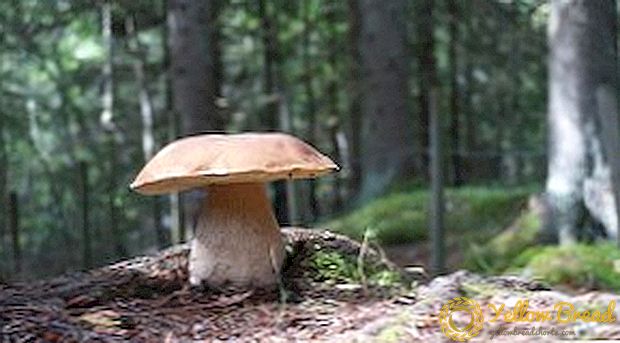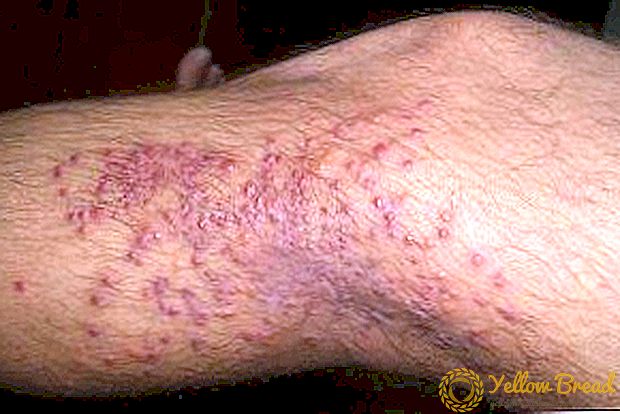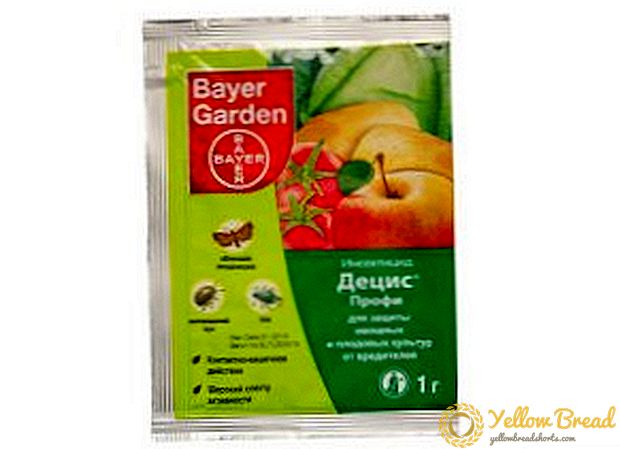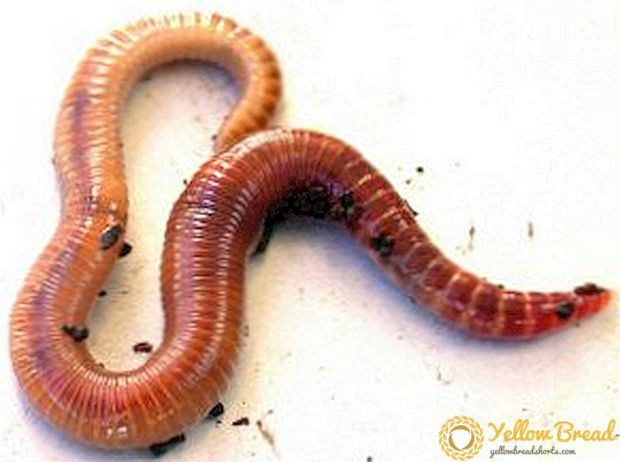 The use of pesticides is, of course, an extreme measure, especially when it comes to controlling weeds, and not diseases and pests. With such a misfortune it is best to fight with the help of hand weeding - safely and securely. But if you are engaged in agriculture on an industrial scale, this method, alas, will not work. For these purposes, selective herbicides of a selective spectrum of action have been developed, destroying weeds and practically safe for crops. One of these drugs is Hermes.
The use of pesticides is, of course, an extreme measure, especially when it comes to controlling weeds, and not diseases and pests. With such a misfortune it is best to fight with the help of hand weeding - safely and securely. But if you are engaged in agriculture on an industrial scale, this method, alas, will not work. For these purposes, selective herbicides of a selective spectrum of action have been developed, destroying weeds and practically safe for crops. One of these drugs is Hermes.
- Active components and packaging
- For what crops is suitable
- What weeds are effective against
- Herbicide Benefits
- Mechanism of action
- Preparation of working solution
- Method, processing time and consumption rate
- Impact speed
- Period of protective action
- Crop rotation restrictions
- Toxicity
- Compatibility with other pesticides
- Shelf life and storage conditions
Active components and packaging
The drug is sold in the form of an oil dispersion. This means that the active substance of the chemical is evenly distributed in the carrier, which is used as vegetable oil.It should be noted that such a form in itself has a number of indisputable advantages.
First of all, the oil is poorly washed off with water, and, consequently, the drug remains on the leaves even after a sudden heavy rain.
Thirdlythe active substance insoluble in water, getting into the oil, does not precipitate out, but is in a finely dispersed state, the solution is as a result obtained as homogeneous and uniform as possible and acts as efficiently as possible on the entire treated area.
In Hermes, the main active ingredients are not one, but two: hizalofop-P-ethyl and imazamox. Each liter of vegetable oil contains 50 g of the first and 38 g of the second component mentioned. Hizalofop-P-ethyl is a water-insoluble white substance of a crystalline structure, almost odorless.
Widely used as a herbicide to protect sugar beets, potatoes, soybeans, sunflower, cotton and some other crops.It is easily absorbed by the organs of weeds, accumulating in the nodes and in the root system and destroying them from within within one to one and a half weeks. In perennial weeds, in addition inhibits secondary regrowth of rhizome.
Imazamox is used in production after germination herbicides to protect against certain sunflower, soybean, pea, rapeseed, wheat, lentils, chickpea, and other cultivated plants.
This substance is also easily absorbed by the organs of a weed plant and blocks the production of substances necessary for its normal development. As a result, the parasite slows its growth and gradually dies, and the chemical quickly dissolves in the soil and is almost not dangerous for other crops.

The manufacturer of Hermes is the Russian company Shchelkovo Agrokhim (which, by the way, is the domestic leader in the production of drugs for the protection of various crops, present on the market, taking into account several transformations, for almost a century and a half and during this period has gained considerable prestige in its field ) realizes this herbicide in original packages (polyethylene canisters) on 5 l and 10 l.
Such volumes are easy to explain, considering the protection of which crops are primarily intended for the preparation.
For what crops is suitable
Proven efficacy of the drug for protection against weeds of plantations after shoots of such plants as:
- sunflower;
- peas;
- soybean;
- chickpeas

The main "wards" of this herbicide are sunflower and peas.
In this sense, "Hermes" is a real find for the farmer.
What weeds are effective against
Due to the combination of the drug not one, but two active substances with herbicidal action, which successfully complement each other, "Hermes" is effective not against one specific, but against different types of weeds of both annual and annual cereals which are generally very difficult to eradicate.
In particular, the drug allows you to clear the field from:
- ambrosia;
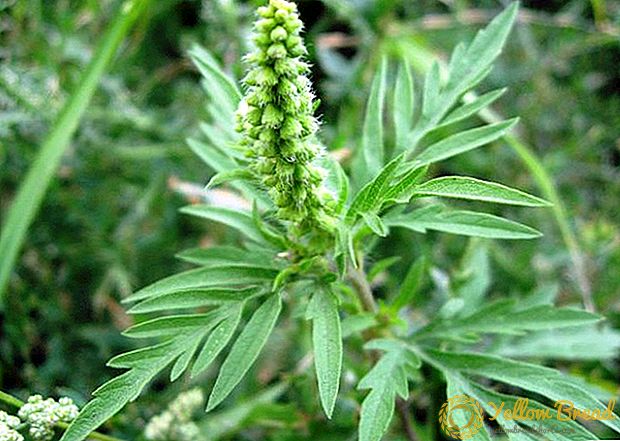
- chicken millet;
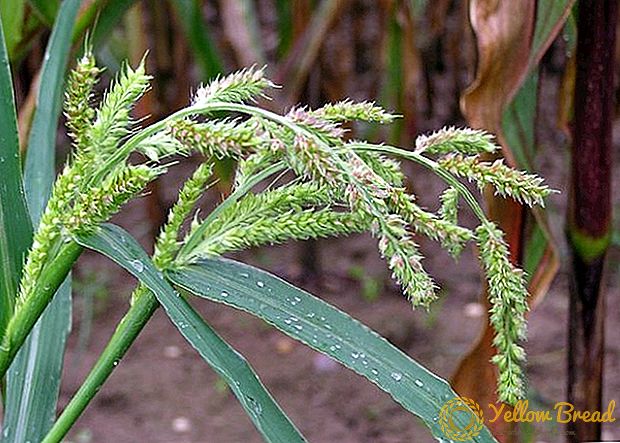
- wheatgrass creeping;
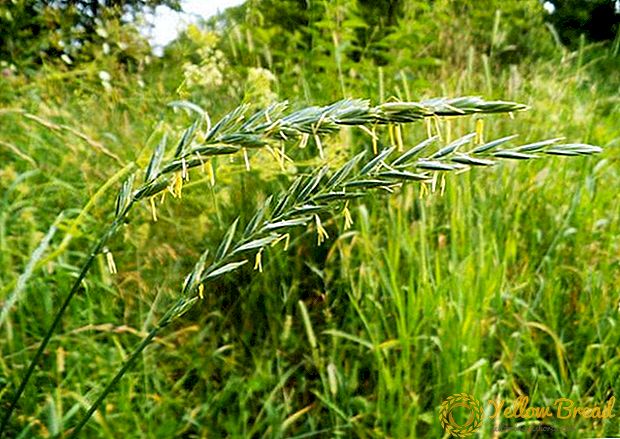
- yarutki field;
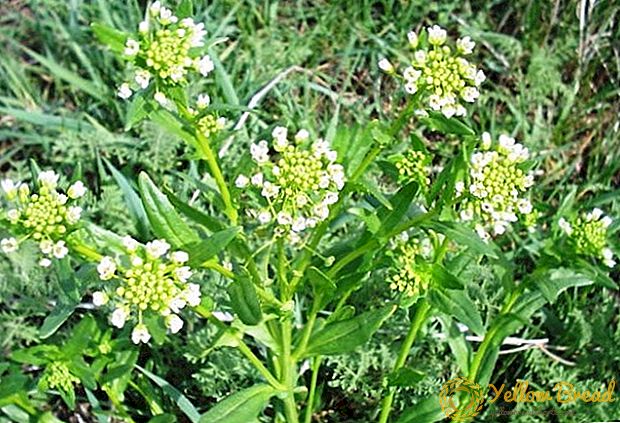
- shchiritsy;
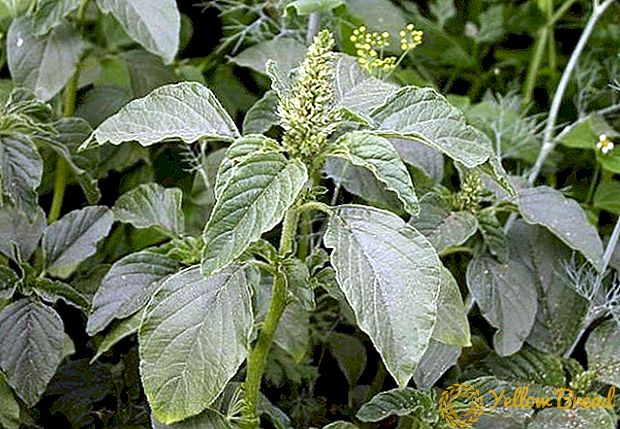
- foxtail;
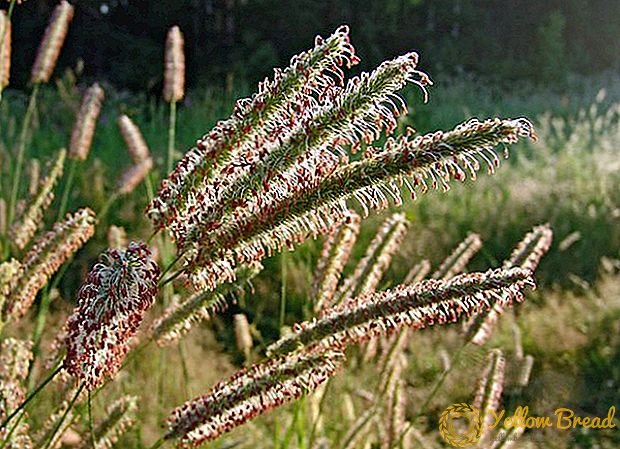
- quinoa;
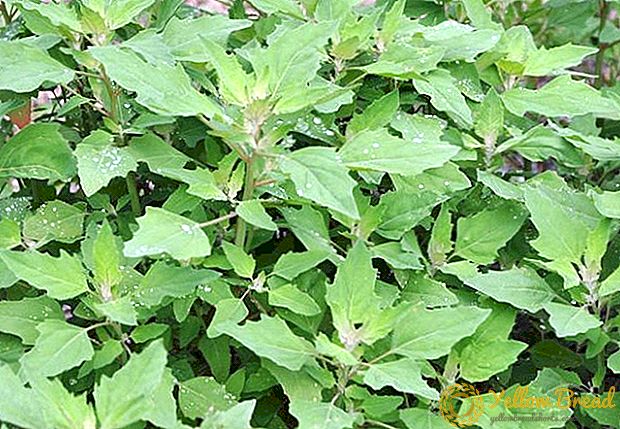
- mustard;
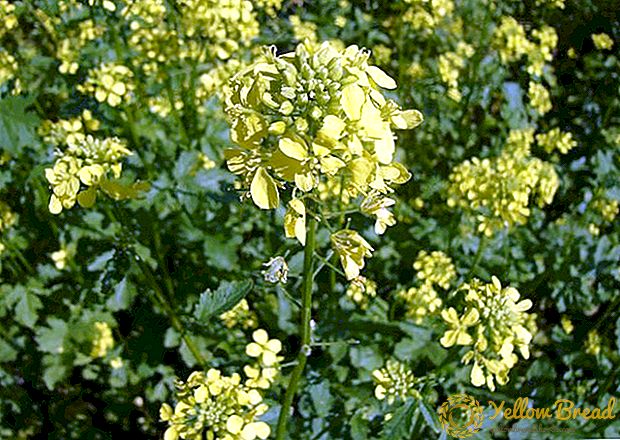
- bluegrass;
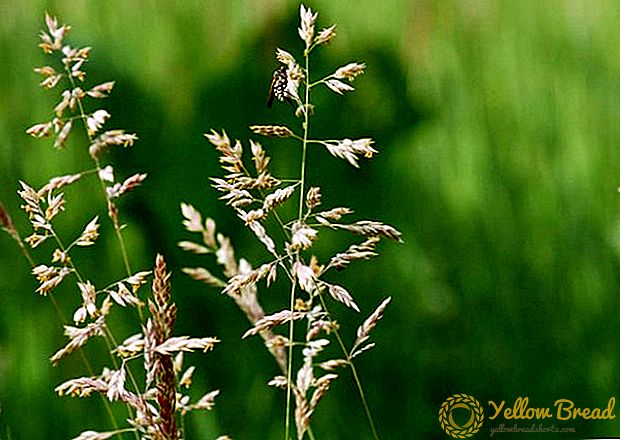
- chaff;
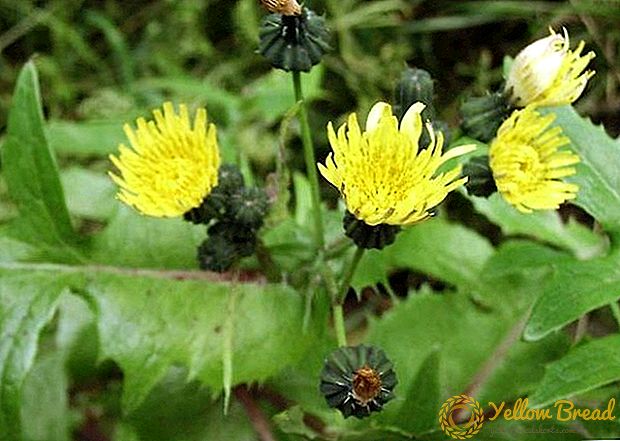
- milkweed vines;
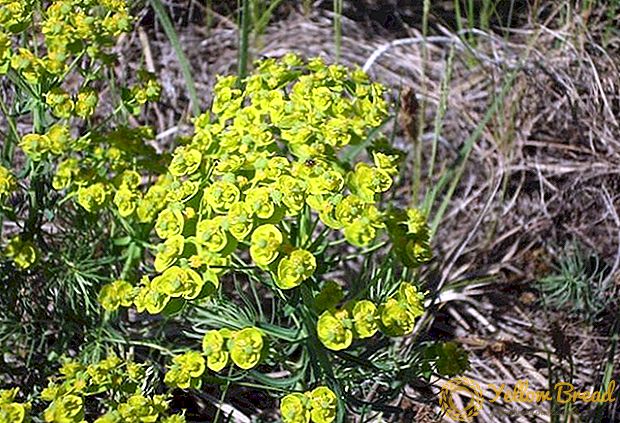
- clever ladder;
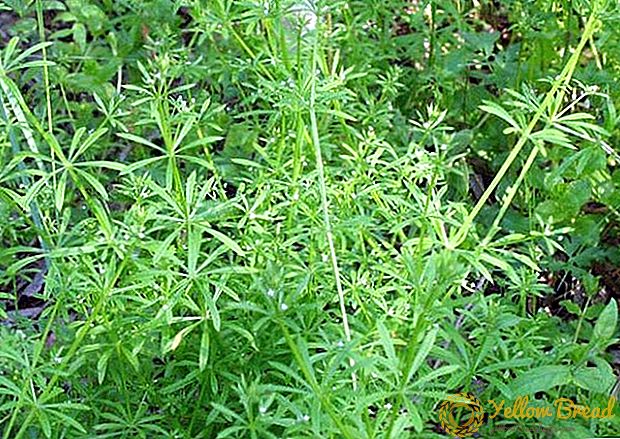
- Tinophora Teofrasta.
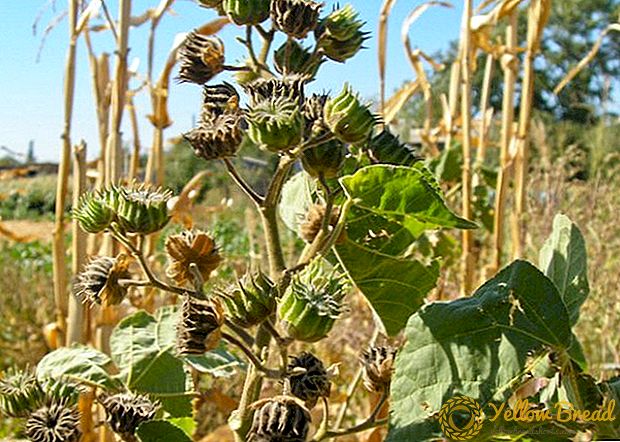
For many decades, breeders have been trying to develop hybrid varieties of sunflower that are resistant to broomrape, but this work is more reminiscent of the notorious “arms race”: for each created resistant hybrid, new weed races are formed very quickly. Therefore, the manufacturers of the herbicide "Hermes" went from the opposite - they created a drug that is really capable of suppressing the development of this most dangerous parasite, preventing it from growing, blooming and, accordingly, forming seeds.

Herbicide Benefits
The main advantages of the drug, we have already mentioned let's summarize them again:
- Convenient form, providing the most uniform distribution of active substances on the treated surface, the rapid penetration into the tissue of the parasite and resistance to washing with sediment.
- The perfect combination of two active ingredients that complement each other.
- A wide range of actions (effective against not one, but a whole list of different classes of weeds, including the most dangerous broomrape for sunflower).
- Minimal, compared with many other drugs, restrictions on crop rotation (more about this will tell below).
- Low toxicity for the main crop, human and environment.
An analysis of the results showed that, although the sunflowers exposed to Hermes were lagging behind in development, this delay was very insignificant,and as soon as the effect of the stressful situation was stopped (the plants began to water again and slightly reduced the hard overheating), everything immediately fell into place. 
At the same time, control samples (treated with another drug) suffered significantly more. From the experiment it was concluded that Hermes effect on mainstream culture much softerthan other weed medications.
Mechanism of action
Thanks to two different in the way of exposure to active substances, the drug acts on the weed complex: absorbed by all organs, including the stem, leaves and root, is active in the soil, inhibits the growth of the parasite and does not allow it to regenerate.
The oil base of the dispersion in this case acts as an accelerator of the drug, destroying the wax layer of the weed and at the same time protects the cultivated plant from sunburn. Due to the oil component, the solution does not dry out on the leaves for a long time, does not evaporate and does not flow, but, on the contrary, is distributed over the ground weed organs with a thin film.
Having fixed, the preparation, by means of the same oil, easily penetrates deep into the plant, where the active substances contained in it begin their destructive work, unmistakably finding growth points and blocking them almost instantly. 
As mentioned, hizalofop-P-ethyl it accumulates in the roots and in the aerial parts, completely blocking the growth of the plant. One week after entering the soil, Hizalofop-P-ethyl decomposes in it without residue. Imazamoks inhibits the synthesis of valine, leucine and isoleucine - the amino acids necessary for the development of the plant, as a result, especially sensitive dicotyledon weeds just die.
Preparation of working solution
To carry out the treatment with the preparation, the working solution is prepared immediately before use by mixing the oil dispersion with water. The technology is as follows: First, clean water is poured into the sprayer tank, then gently, with constant stirring, the herbicide is added (before use, the manufacturer recommends thoroughly shaking the contents of the package).
When the canister from under the preparation is empty, a small amount of water is poured in there, it is thoroughly mixed to wash away the remnants of the preparation from the walls, it is poured into the sprayer tank. This procedure, to maximize the use of the entire drug, without residue, is recommended to be carried out several times.
The manufacturer specifies the concentration of the herbicide "Hermes" in the working solution in the instructions attached to the product for its use. It depends on what kind of culture will be processed. For sunflower, for example, a solution is prepared with a concentration of 0.3-0.45%; for peas, chickpeas and soy, the concentration is made slightly less - 0.3-0.35%. Processing is best carried out using ground sprayers such as Amazone or similar devices to this brand.
Method, processing time and consumption rate
Treatment with the drug "Hermes" is carried out once during the season by spraying the crops in the early stages of the development of parasites (asas a rule, the moment is chosen when the majority of dicotyledonous weeds form from one to three true leaves, but when processing sunflower, one can wait until the fourth leaf appears.
As for the cultivated crop itself, in relation to soybean, pea and chickpea, the number of true leaves at seedlings should also be from one to three; for sunflower, to five.
Hermes herbicide consumption rate on average varies within 1 l per 1 g of cultivated area, however, it varies slightly depending on the main crop: processing of chickpea and soybean crops consumes from 0.7 l to 1 l per 1 g, while processing peas - 0.7-0.9 l per 1 g, for the sunflower the drug needs a little more - from 0.9 to 1.1 l.
Since the concentration of the working solution for processing sunflower is initially slightly higher, the consumption of such a solution per 1 g of the area is always about 200-300 l.

Impact speed
The manufacturer guarantees the onset of the drug on the seventh day after treatment, about 15 days or a little later, weed growth should stop completely, and after a month and a half the parasites die.
If you do not take into account the specified ideal conditions, on average, the drug provides a result after two months of waiting, but in relation to sunflower it acts a little faster - about 52 days after treatment.
Period of protective action
Hermes herbicide - a drug that acts on the weeds after they have climbed (as we said, the active substance is initially distributed over the aerial parts of a plant, and it is through them that it penetrates into its internal organs and tissues). Therefore, those parasites that sprout after treatment, remain resistant to the action of poison (seeds and germes in the soil germs do not act).

There are also no cases of habituation of weeds to "Hermes", however, in order to avoid such trouble, it is recommended to alternate its use with other herbicides.
Crop rotation restrictions
As we have said, compared to other pesticides, this herbicide has minimal requirements for limiting crop rotation, but this does not mean that there are no such restrictions at all.
The main danger of the drug is for beets. It can be planted on the field not earlier than 16 months after their processing by Hermes. Vegetables can be planted when at least 10 months have passed after applying the herbicide. For sowing cereals, soybeans and cities it is enough to sustain four months.
The manufacturer, however, notes a unique, compared with other preparations against weeds, the ability of Hermes to not have a harmful after-effect on legumes. Sunflower, rapeseed and maize varieties resistant to imidazolinone, can be planted regardless of the use of "Hermes", and all other varieties of these crops - the next year after processing.

Toxicity
The drug has a minimal negative impact on the main cultivated culture, because the whole point of its “work” is a clear selectivity. With increased load on the plant, resulting from the complex effects of the herbicide and adverse environmental conditions (drought, high temperatures) there may be a slowdown in the growth of culture, the appearance of light spots on the leaves, but as soon as the weather gets better, the condition of the plant is quickly restored.
The generally accepted classification of chemicals according to the degree of danger (harmful effects on the human body in case of violation of safety measures during work with such a substance) implies their division into four classes by decreasing (the most dangerous is the first, the least is the fourth). Hermes herbicide refers to the third class of danger (moderately hazardous substance).
Compatibility with other pesticides
The company "Shchelkovo Agrohim" declares the excellent compatibility of this herbicide with pesticides (including insecticides and fungicides) of its own production.
In order to eliminate unpleasant consequences,Before using the drug in conjunction with other pesticides in each case, you need to check the compatibility of specific active substances that are part of a drug.
In particular, it is not recommended to simultaneously fight weeds with the help of Hermes and to destroy pests of organophosphate drugs such as Chlorofos, Chlorpyrifos, Thiofos, Dichlorvos, Diazinon, Dimethoat, Malation.
Shelf life and storage conditions
The manufacturer recommends storing the herbicide in a place protected from children. The drug withstands a fairly large range of temperature fluctuations - from -10 ° C to 35 ° C. Subject to these conditions, the company gives a guarantee on the drug for two years from the date of production (do not just forget to mix it well before use, especially after long-term storage).
From all of the above, we can conclude that the herbicide Hermes developed by Russian chemists is almost a unique way to destroy the main weeds, first of all, in the fields with sunflower, increase crop yield without harming it or the environment.














